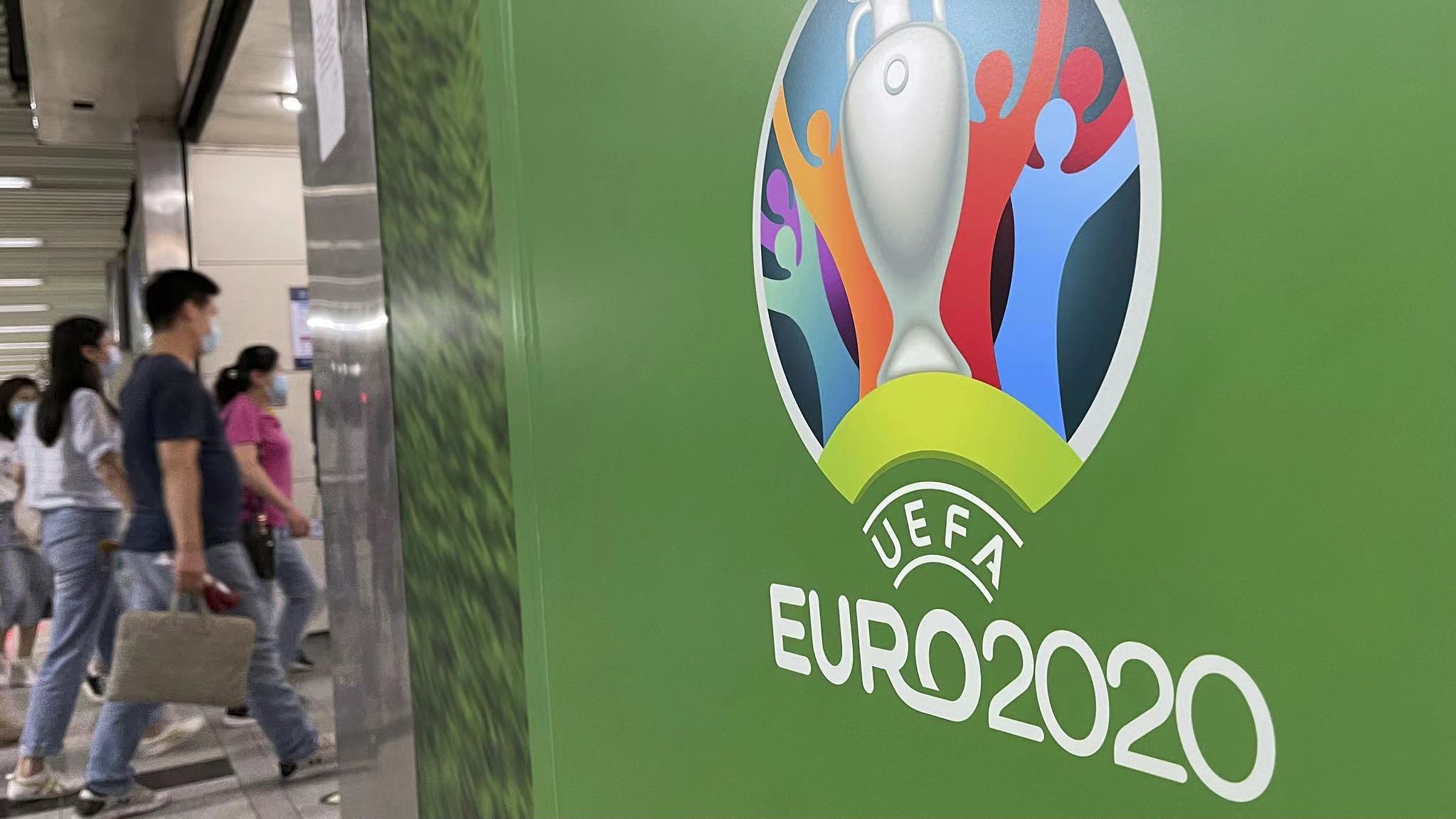
A commercial of UEFA Euro in a subway station in Beijing, China, July 3, 2021. /CFP
A commercial of UEFA Euro in a subway station in Beijing, China, July 3, 2021. /CFP
UEFA Euro 2020 is approaching the final, which will take place on Sunday between Italy and England. The tournament this year is a unique one, not only for being the first sporting event held after a one-year delay due to the COVID-19 hit, but also a milestone for Chinese sponsorship in UEFA.
Commercial rights are the second-largest revenue source for the UEFA Euro Championship after broadcast rights, with an increased share of the total revenue this year compared to past championships.
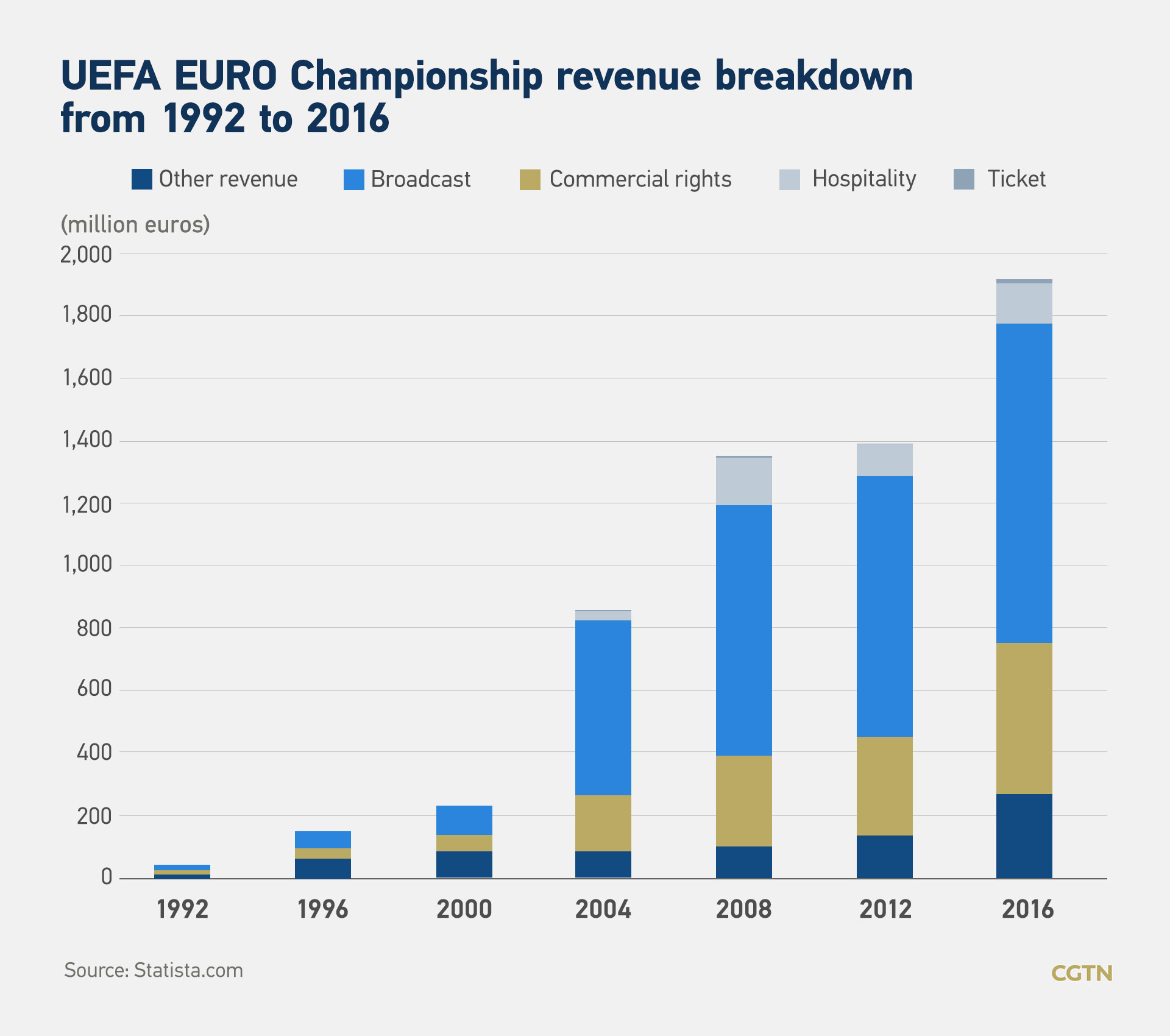
Four Chinese companies – Hisense, Alipay, Vivo, and TikTok – are among the 12 sponsors of Euro 2020, making China the largest source of sponsorship for the tournament for the first time.
Analysts say it was a smart move for Chinese companies to use this exposure for marketing to China, where there are plenty of Euro 2020 fans, and potential new customers abroad.
The increase of Chinese sponsors also presented an interesting relation with the world economic landscape shifts.
Top Asian sponsor: China replaces Japan
Japanese companies sponsored every Euro Championship from 1992 to 2012, thanks to the country's leading consumer electronics development.
During this period, China's economy saw increasing momentum from 1998, with the gross domestic product (GDP) topping $1 trillion for the first time. It surpassed Japan in 2010 to become the second largest economy in the world.
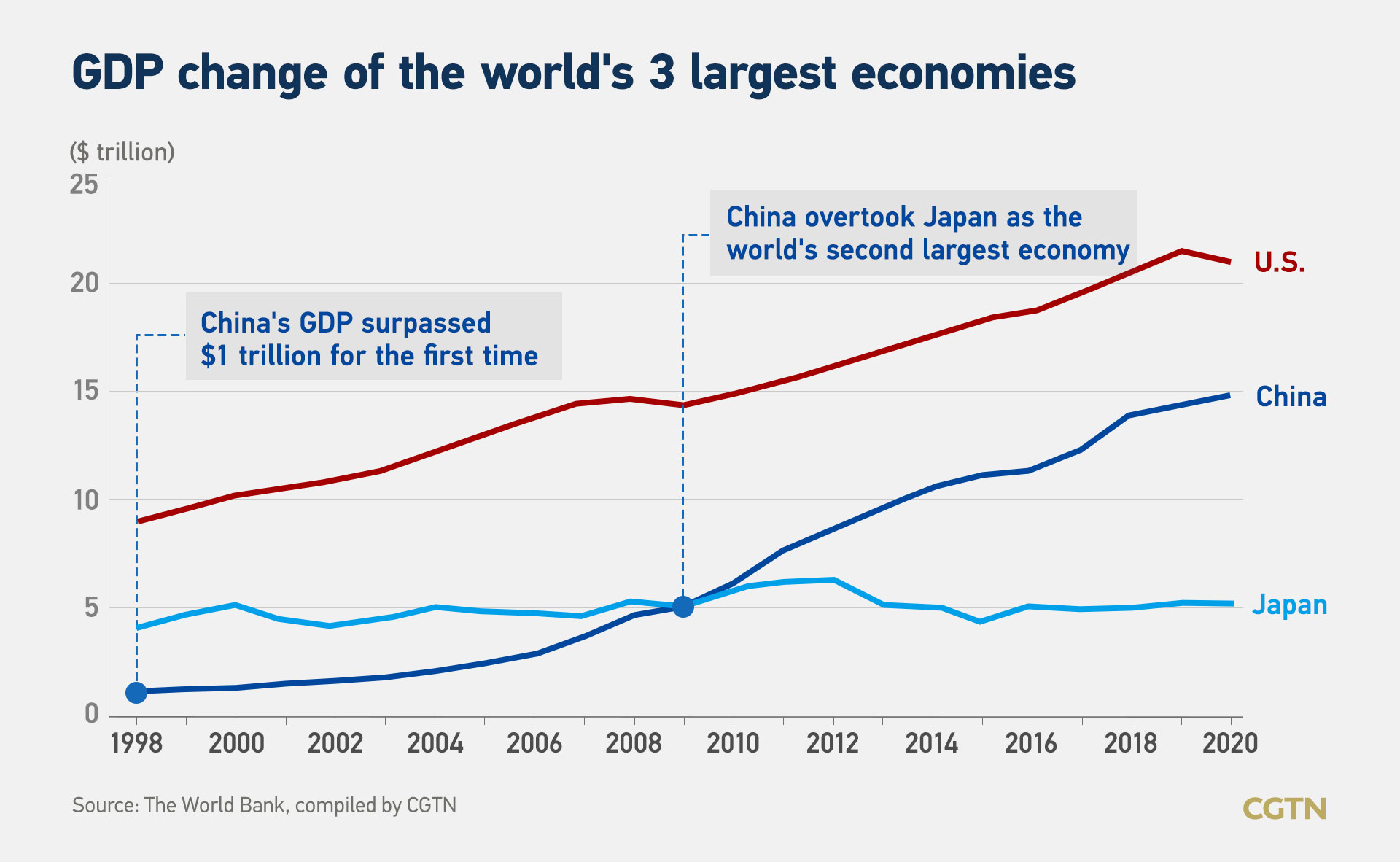
Japanese sponsors have been completely absent in the latest two tournaments in 2016 and 2020, replaced by those from China.
In the tournament, three more Chinese companies expanded the sponsor team after Hisense put the first Chinese advertisement in front of football fans worldwide in 2016, which was also the first time in UEFA's 56-year history having a sponsor from the Chinese mainland.
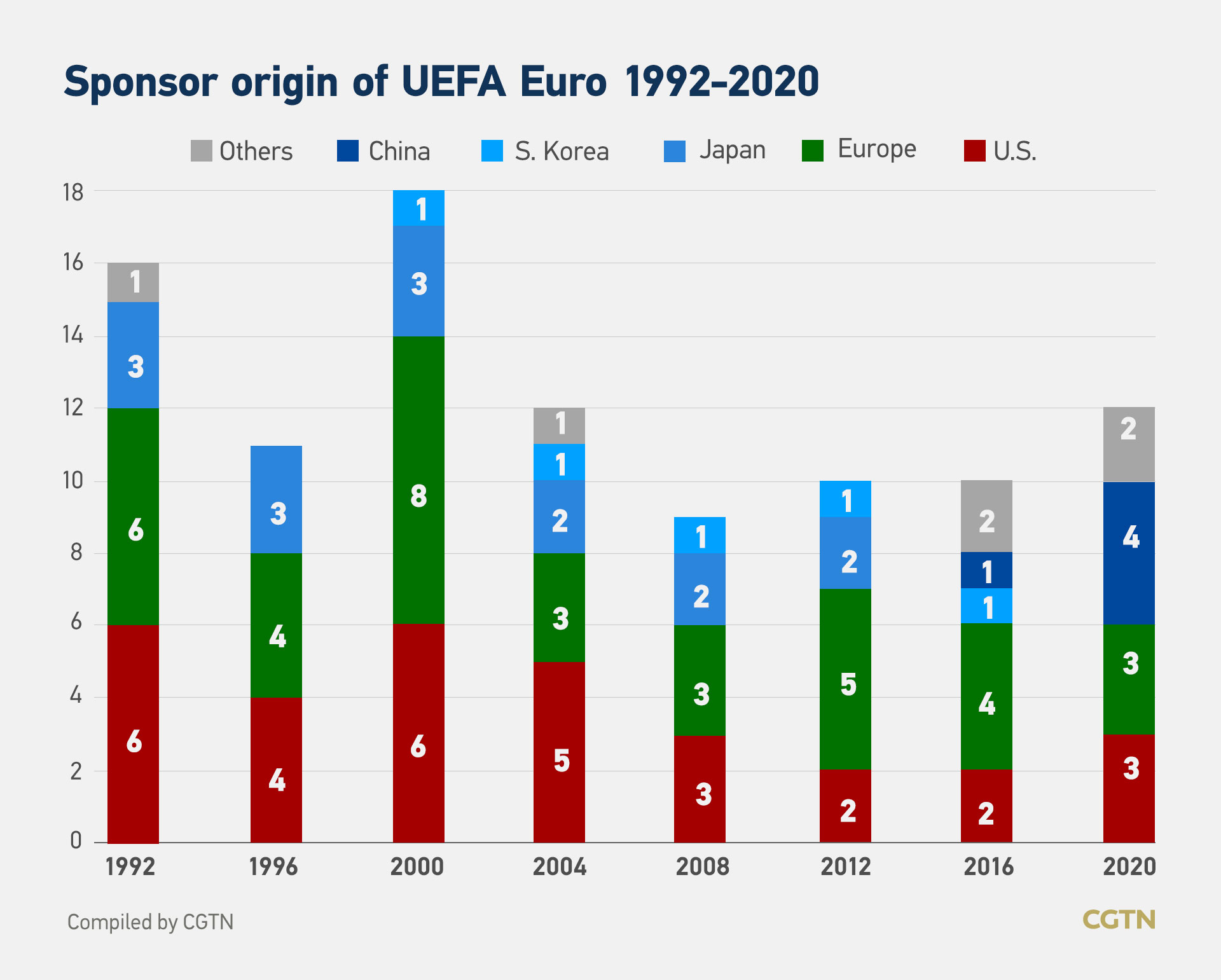
In fact, Euro 2020 is not the first global tournament to see a dramatic shift in the origin of its sponsors. At the 2018 FIFA World Cup Russia, a third of the top sponsors came from China.
Besides for China's economy surging over the two decades, with the share of global GDP growing from 3.61 percent in 2000 to 17.38 percent in 2020, other Asian major economies – excluding Japan – also experienced an expansion in the share of global GDP.
However, the share of global GDP for European and North American economies shrank during the same time.
"Asia is rapidly overtaking Europe and North America in relative economic power, a trend that will continue for the next decades. A prestigious World Cup sponsorship is a sign of Asia's rising economic power," Kalin Anev Janse, CFO and member of the management board of the European Stability Mechanism, observed from the 2018 event.
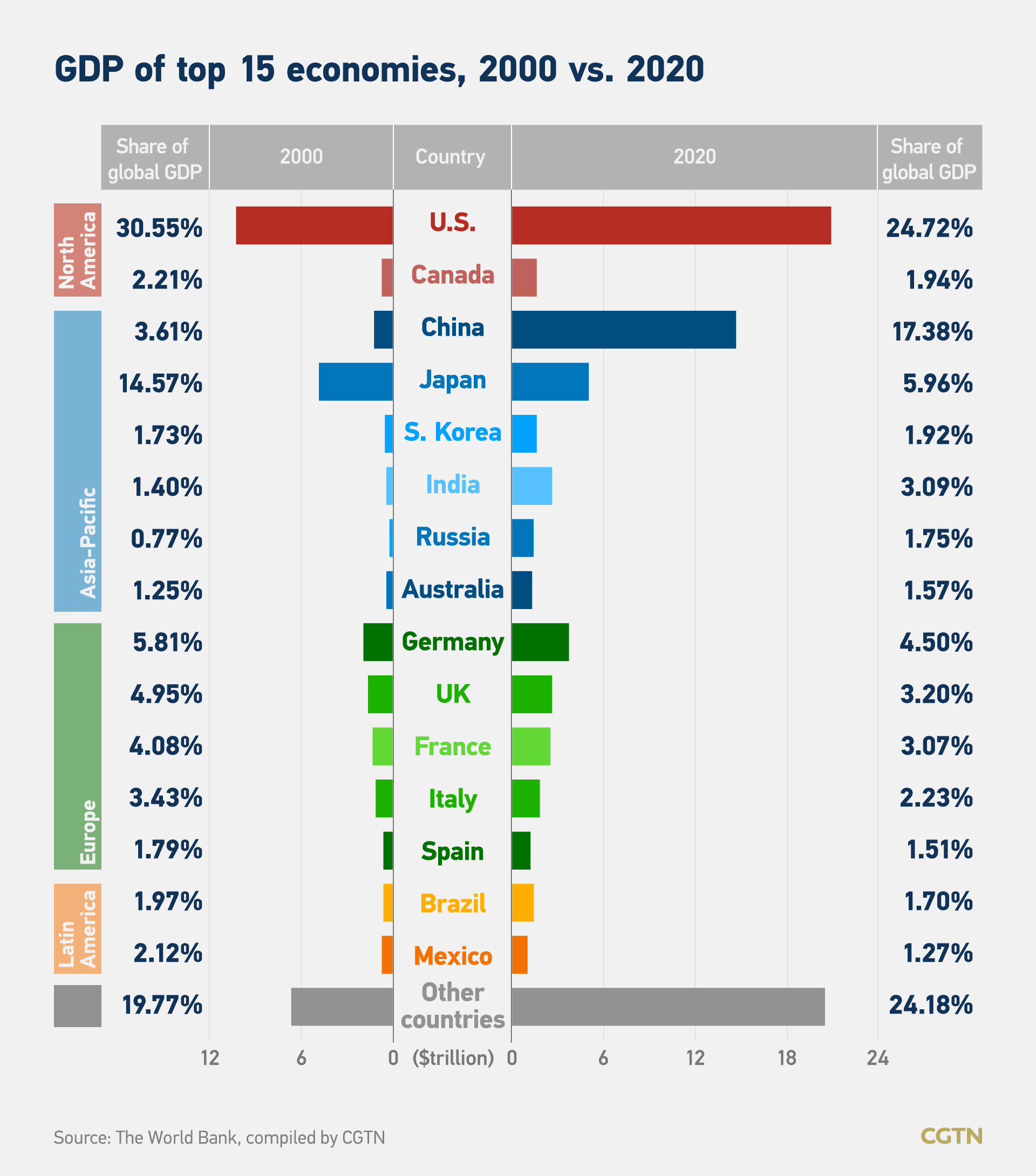
China to fuel global sponsorship market post COVID-19
Global economies are recovering from COVID-19 at different paces, which will affect where sports sponsorships come from as well as their values, according to Nielsen Sports.
China to take an increasingly prominent role in the sponsorship landscape globally, Nielsen Sports expected in a report.
The World Bank said in the latest projection that China's economic growth in 2021 would be 8.5 percent year on year, following 2 percent growth in 2020 as the only major economy seeing positive growth globally.
(Graphics by Chen Yuyang and Du Chenxin)

